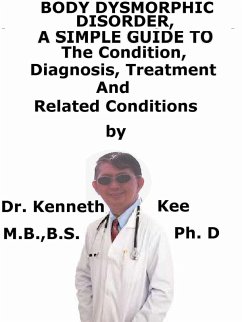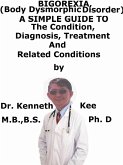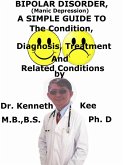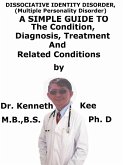While most people have parts of their body they feel less than passionate about, body dysmorphic disorder (BDD) is a psychiatric disorder in which people become obsessed with a slight imperfection or nonexistent body "flaw."
It goes beyond just looking in the mirror and not liking the nose or being annoyed by the size of the thighs.
Instead, it is a fixation that interferes with the daily life.
Typically, other people cannot even see the flaw that the person with BDD is consumed by.
No matter how many times people assure them they look fine or that there is no flaw, the person with BDD cannot accept that the issue does not exist.
Body dysmorphic disorder (BDD) is a definite mental disorder in which a person is anxious with an imagined physical defect or a minor defect that others often cannot see.
As a result, people with this disorder see themselves as "ugly" and often avoid social exposure or turn to plastic surgery to try to improve their appearance.
BDD has similar features with eating disorders and obsessive-compulsive disorder in that all involve a concern with body image.
BDD is a long-term (chronic) disorder that involves men and women equally.
It normally begins during the teen years or early adulthood.
The most frequent areas of worry for people with BDD are:
1. Skin imperfections: These include wrinkles, scars, acne, and blemishes.
2. Hair: This might be head or body hair or absence of hair.
3. Facial features: Very often this involves the nose or the shape and size of any facial feature.
4. Body weight: Sufferers may obsess about their weight or muscle tone.
Other areas of concern are the size of the penis, breasts, thighs, buttocks, muscles, and the presence of certain body odors.
Causes
Doctors are not sure what causes BDD.
One theory indicates the disorder causes a problem with the size or functioning of certain brain areas that process information about body appearance.
BDD often happens in people with other mental health disorders such as major depression and anxiety
Other factors that might trigger BDD are:
1. Experience of traumatic events or emotional conflict during childhood
2. Low self-esteem
3. Parents and others critics
4. Pressure from peers and society
Symptoms
Some patients are preoccupied with their overall appearance
About40% of patients with BDD actively think about the flawed body parts for 3 to 8 hours per day
These preoccupations are almost always difficult to stop or control
They are linked with significant anxiety and distress.
Diagnosis:
Based on DSM5:
1. A preoccupation with a flaw in the physical appearance for at least one hour per day.
2. Repetitive behaviors, such as skin picking, repeatedly changing the clothes, or looking in the mirror.
3. Significant distress or a disruption in the ability to function because of the obsession with the flaw.
Treatment:
Psychotherapy
One treatment that may help is intensive psychotherapy with a focus on cognitive behavioral therapy.
The focus of the therapy is on identity building, perception, self-esteem, and self-worth.
Medicines:
The first-line of medicinal treatment for BDD is selective serotonin reuptake inhibitor (SSRI) antidepressants such as fluoxetine (Prozac) and escitalopram (Lexapro).
SSRIs can help reduce obsessive thoughts and behaviors (30%).
Another help is antipychotic drugs such as olanzapine, aripiprazole, or pimozide.
Surgery
Aesthetic cosmetic surgery is not advocated for people with BDD.
Results showed poor outcomes in people with BDD after cosmetic surgery.
The best treatment is a combination of cognitive behavioral therapy and SSRI.
TABLE OF CONTENT
Introduction
Chapter 1 Body Dysmorphic Disorder
Chapter 2 Causes
Chapter 3 S...
Dieser Download kann aus rechtlichen Gründen nur mit Rechnungsadresse in A, B, CY, CZ, D, DK, EW, E, FIN, F, GR, H, IRL, I, LT, L, LR, M, NL, PL, P, R, S, SLO, SK ausgeliefert werden.









